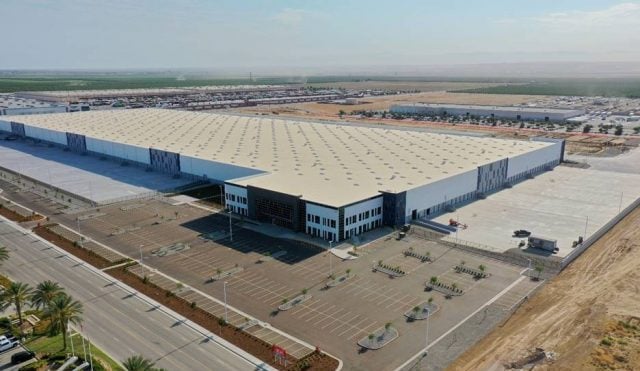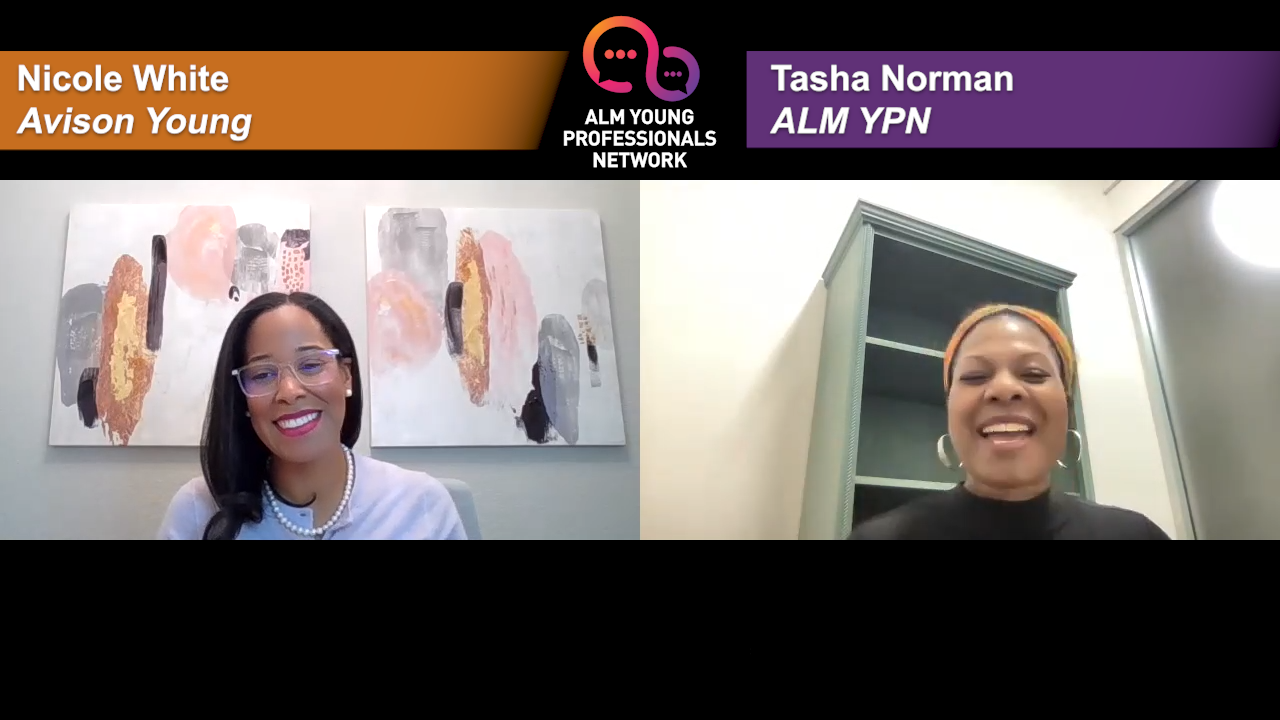This is an HTML version of an article that ran in Real Estate Forum. To see the story in its original format, click here.
That's according to those who participated in Real Estate Forum's Retail Power Panel this year. Brought to you in conjunction with this month's ICSC RECon show and Real Estate Media Thought Leaders Marcus & Millichap's annual Retail Trends event at the conference, the roudtable discussion brought together experts from across the retail real estate spectrum to talk about the state of the business, and where it is headed. An edited version of that discussion, moderated by Real Estate Media editor-in-chief Sule Aygoren, follows.
PARTICIPANTS (from left)
New York City-based Vice President David Todd oversees Prudential Real Estate Investors' US retail investments, consisting of about 25 million square feet in 140 properties across the country.
Gary Sabin is Chairman and CEO of Excel Trust in San Diego. The REIT, which operates 40 shopping centers throughout the southeastern, southwestern and coastal states in the US.
Based in San Diego, Bill Rose is the vice president and national director of Marcus & Millichap's National Retail Group and Net Leased Properties Group.
John Kite is Chairman and Chief Executive Officer of Kite Realty Group. Based in Indianapolis, the company owns about 120 open-air shopping centers in 23 states.
Randy Young is Senior Vice President, Real Estate and Development, for the Fresh Market. The Greensboro, NC-based company operates 170 stores in 27 states.
SULE AYGOREN: From your vantage point in the business, what's your 30-second snapshot of the retail market?
BILL ROSE: We are really focused more on open air-center centers and single tenant net-leased properties, if we compare this time to last year, investment transactions are up by roughly 15% overall. Moving forward, we should anticipate an overall industry-level of volume of about $100 million of retail real estate investment sales in the net-leased, small shopping centers and larger open-air shopping center space.
JOHN KITE: The environment in general retail is good, but it's really driven primarily by the lack of supply that we've seen in the past six to eight years. It's really a supply and demand business. Right now, supply is extremely low, but demand is decent and that's creating a pretty good environment for those of us who own centers.
GARY SABIN: I agree with John. There's not a lot of anchor space available in desirable properties I don't think we have an empty box in our centers other than in new developments. We have more challenges with shop space but the retail market is strong overall. There are actually more opportunities when markets are disrupted. Today capital is plentiful and inexpensive so the future risk is overbuilding but there's a lot of room left in the cycle with respect to the class A dominant centers—that's where we're choosing to focus. There's much more risk in some of the B and C properties, but the class A centers are going to continue to be in very high demand.
DAVID TODD: We are bullish on the sector compared to other asset types and feel as if we are in the beginning of the expansion phase. Rent growth is now positive and this is the best job growth we've seen since the '90s. Real estate cycles do exist, but until you see excessive speculative building and overly aggressive lenders, we're in a good place.
AYGOREN: Let's first look at some macro trends. The huge factors impacting retail are the rise of e-commerce and demographic trends related to Millennials and ethnic populations. What are your thoughts and observations of those?
ROSE: Retail is always evolving. With the push of Millennials entering the market, we anticipate more stores opening to meet their consumption interests. Plus, roughly 10,000 to 15,000 people are turning 65 every day through 2025, so we're also going to see a number of great new concepts for that cohort as well.
KITE: The Millennials comprise a very wide age gap, 18 to 34, so the majority of retailers are really focused on the older end of that group since they're the ones that have the most disposable income.
RANDY YOUNG: If you look at obvious trends, social networking is influencing behaviors in shopping patterns. E-commerce is influencing how people shop for products. We're also seeing huge attraction to the concept of “fresh” and a heightened engagement with food, where people want to experience the food and they're looking for quality food that redefines “fresh.” They're more willing to make multiple trips to a store, as opposed to shopping weekly to stock up their pantries. So the type of product is changing, but it's not impacting the channels of offering.
[IMGCAP(1)]
TODD: I agree with Randy's points, and I think his business has shown to be very resilient to e-commerce. This may change for commodity grocery products, but it's the right move to focus on “fresh.” Picking bananas, or what have you, is fairly personal. That's why most investors would like to include a grocer in any retail asset; you'll get attractive cap rate compression. But to answer your question, e-commerce is a huge force in the retail industry and to be a successful owner you have to constantly think of ways to get people off their couch or phone and to your stores. Convenience and the shopper experience are two key areas of for us.
YOUNG: We have an online presence, but we're not necessarily recreating our brand position around it because we still believe that the aspirational shopper that's looking to buy our high-quality food wants to experience it in the store. So, yes, we're interacting with our consumers through the e-channels; we are available online, but it's not where we're investing our marketing efforts. We're big believers that bricks and mortar is where the experience and the engagement with the customer will happen best.
KITE: This is always a hot topic, but if you look at retail sales in the US, they're approximately $4.5 trillion a year. E-commerce comprises less than 10% of that total. Of course, the growth rate is fairly substantial but just like a developing economy, over time that growth rate will slow down as it matures. This is a good process, but it's going to take time for people to understand it. We're focused on the real estate and good real estate in a good location wins. Drive around on any given Saturday and you'll see where there are very busy shopping centers—and those that are not.
Plus, you have to consider that these trends come full circle; there are a lot of specialty e-commerce-only retailers who are now opening physical stores. It's no different than the national retailers that are very focused on their online business. Ultimately these things will merge and it's all about serving the customer.
[IMGCAP(2)]
AYGOREN: Going back to what Randy mentioned about the customer experience, we've been hearing a lot about the concept of experiential retail, be it offering consumers a special experience in retail stores or locating a store in a mixed-use project that has other offerings. Has that impacted the kind of space tenants are seeking, or the types of properties you're looking to build or buy?
SABIN: Tenants want to be near successful tenants, so they do like to cluster around other uses that will drive traffic. That's why we're looking for dominant centers where we have a lot of successful tenants together and, when appropriate, adding more of a sense of “place,” be it some type of mixed-use, residential or entertainment. But standalone retail can be very successful as long as you have a cluster of successful tenants together to feed off of each other.
TODD: For lifestyle-type properties, this is of utmost importance. We have found that tenants who focus on discretionary-spending shoppers do better in experiential type environments. It gives people a reason to come to the property and keeps them engaged. For necessity retail it is different—we're looking for convenience and visibility. So the “experience” is a quick and valuable shopping trip, rather than some pretty fountain. E-commerce will likely benefit the top properties as they become even more valuable and appealing to tenants creating demand for the space and an opportunity to increase rents, while others fall by the wayside. Asset selection and active asset management is key.
SABIN: We're developing a property right now that has a Wegman's and a Cabela's—both on ground leases. One could argue that they draw from decidedly different shoppers but we think that will be a good thing and generate traffic that will be complimentary to the other uses in the center.
Rose: Gary, out of curiosity, in developing that center, let's say someone like Amazon called you, wanting to add a new concept store to the project. What do you think?
SABIN: Why not? If they're going to pay good rent and draw traffic, I don't know why it would be a conflict. It would depend on the overall merchandise of the center but more and more we are seeing different retail channels feeding off of each other in a complementary way, which benefits the consumer. We're trying to integrate all the merchandise channels. It's all about traffic, convenience and offering the right merchandise.
AYGOREN: Despite the demand for product, the level of development taking place has been low. Why? What are your development plans, if any?
TODD: There is demand to buy good product, but there may not be an overabundance of retailers demanding to lease space, or at least not at rent levels that make developments feasible. Where we have seen successful developments occur is where there is a true need for the space, and tenants will follow. Generally those developments lately are infill and mixed use. We are fortunate to have several developments ongoing that meet those needs, a couple of them actually anchored by Randy's company.
YOUNG: Our plan is to grow new units at an annual pace of 12% to 15%, and in order to accomplish that aggressive growth rate, we cannot solely rely upon new ground-up development. However, our pipeline has a healthy mix of both second generation space and new development. In fact, roughly 60% of our current pipeline is new development.
[IMGCAP(1)]
SABIN: The recession was so deep and memories are longer this time around from retailers, lenders and developers but I think it is changing as we are seeing more developments on the drawing board fueled by healthy retailers wanting to expand market share. We have three excellent developments we are in various stages of currently. We typically team up with a developer who has completed the entitlements and anchor leases but needs help to cross the finish line. This shortens the gestation time and risk considerably.
AYGOREN: What's being done with the vacant outdated and underutilized retail space in the market? Are these offering redevelopment opportunities—as retail space or otherwise?
SABIN: These are being carved up and retenanted provided they are in good locations. For example we divided a Borders bookstore into two spaces and received much higher rents and are blading an oversized restaurant and building separate pads. Difficult spaces demand more creativity but we have been successful in converting space to storage, call centers, municipal uses, etc.
TODD: Many markets are over retailed and we are at a stage in the cycle where if you have invested a considerable amount of time and money into a property and it hasn't shown some promise, it might be time to move on. It is natural to gravitate to the shiniest, newest thing so if you're in a market with a lot of dated properties, and you are well positioned geographically, redevelopment can make a lot of sense.
YOUNG: For the Fresh Market, we are seeing opportunities to backfill vacated junior boxes where the shopping center has solid long-term vitality with compatible co-tenants. Big boxes are more difficult for us to develop without sister tenants, just because of the nature of our format.
[IMGCAP(2)]
AYGOREN: For the past few years across the country, the economic recovery has been spotty, at best. As it has evened out, what parts of your portfolios have been the best performing? And has anything surprised you in the past 12 months?
SABIN: We follow the migration and demographic trends, so we like what people call the “smile states,” which encompasses both coasts and the southeastern and southwestern states. We like to go where there are pockets of growth and strength. We look at very good school districts because that keeps an area vibrant. When someone gets transferred for work, the first thing that they often do if they have children is seek out the areas with the best school districts. We have found that to be a very successful metric. Those markets may not be downtown Los Angeles or Chicago but they'll likely have very good household incomes and growing populations. Then we obviously try to get the best in class retailers.
ROSE: Gary, did your center's see any impact from falling oil prices in markets like Houston?
SABIN: It's a two-edged sword. The price of oil falls and most consumers benefit because the cost of gasoline goes down but energy companies cut back. We are wrapping up the development of a property in Odessa, which is right in the oil patch. Some of the retailers there had a hard time finding employees because the oil-related jobs were paying so much. The McDonald's had to pay signing bonuses to get people to work there. That was the other extreme. When the price of oil fell we thought we'd see an impact, but it has not affected our leasing. Actually, it's picked up. We have another center in Houston that's anchored by a Target, and it's continued to be fully leased.
KITE: We own around two million square feet in Texas. It's a very big state and energy doesn't really drive everything. In our shopping centers in Houston, in fact, we had opportunities with significant rent growth. These things take a long time to work through. One of the great things about being a retail landlord is the length and structure of leases essentially allows you to weather any particular situation.
TODD: This statement is generally only true for the retail asset class, but we don't invest in markets, we invest in assets. As for surprises, we've seen a tremendous uptick in the number of fast casual restaurants.
AYGOREN: Real estate's been a highly sought-after investment for pretty much anybody with money out there to spend. As investors, how are you differentiating yourselves from the competition out there and are you worried about the market becoming overheated?
SABIN: I think we would all agree that there's a lot of institutional capital seeking class A real estate. It's a function of the global economy that has created opportunities for everyone, but it also results in an extremely competitive environment. To use a baseball analogy, we try to get ahead of the pitch by working with relationships with groups that have attractive properties coming out of the ground before they hit the market.
[IMGCAP(1)]
TODD: We live in a world where everyone is chasing returns. Real estate happens to be priced very favorably now in a macro sense, so a lot of investors are showing up at the bidding table. Whether that's going to be a long-term trend is tough to say, but it seems as if cap rates are more driven by how aggressive the lending environment is versus the number of investors interested in the asset class. Regardless, it doesn't feel as if we're getting into a stage where we should take our foot off the gas so long as you are smart about asset selection.
SABIN: The biggest challenge is there's so much money chasing product and not enough supply of class A properties in desirable markets. We've had to work harder to find the quality properties to buy. Interest rates have been low enough that people can reach deeper than they have before, so cap rates have been decreasing. We try very hard to buy off market through relationships we have developed over 30-plus years. Not always but sometimes when you show up at an auction and walk away the winner, you've just proved that you're the least intelligent of about 30 people.
AYGOREN: Excel Trust just announced it has agreed to be bought by Blackstone. Last year, Kite Realty closed on its acquisition of Inland Diversified. Gary and John, your firms are on different sides of these deals, as seller and buyer, respectively. What was behind the decisions behind the M&As? How will it change your business/operations?
SABIN: We always ask ourselves what is in the best interest of our shareholders and we felt with cash flow per share multiples at historic highs, and cap rates and interest rates at historic lows, that it was a good time to exit the public markets. Private capital can be more patient than the quarterly report card of the public markets, and decisions can be made intelligently based on real estate fundamentals as opposed to the opinions of Wall Street.
KITE: We are always reviewing opportunities to acquire high quality shopping centers. When the Inland Diversified opportunity came up, we jumped on it because we loved the real estate. On the operations front, the acquisition doubled the size of our company and we now operate a 25-million-square-foot national portfolio of high quality shopping centers, which gives our customers many choices.
AYGOREN: Do you all see more M&As on the horizon?
Rose: Certainly. The capital interested in hard real estate assets has experienced consistent returns and likes what they see.
TODD: We should, but it's unclear as to what level. Agency risk is often at play and people like to keep their jobs.
SABIN: I think there will be more public to private transactions as long as there is a disparity between the valuations between the two markets. There will probably be fewer public-to-public deals because of management teams who are afraid to let go.
AYGOREN: What's your outlook for the sector for the next 12-18 months?
SABIN: I think it is very positive and will track the economy overall. Things should be steady, but not crazy—which is healthy.
TODD: We've seen favorable employment gains in both quantity and quality. Additionally, these gains have now taken place throughout most of the country, versus earlier in the cycle, which was predominately in tech and energy markets. However, we haven't seen this translate into much wage growth yet so that will be important to watch. But in short, so long as developers and high leveraged investors are kept in check, I agree with Bill that we'll see continued growth.
Rose: Real estate fundamentals continue to improve and are aligned with the growing job market, consumer confidence and GDP output. Sales drive rent, rent drives value. We will continue an upward trajectory.
© Touchpoint Markets, All Rights Reserved. Request academic re-use from www.copyright.com. All other uses, submit a request to [email protected]. For more inforrmation visit Asset & Logo Licensing.







